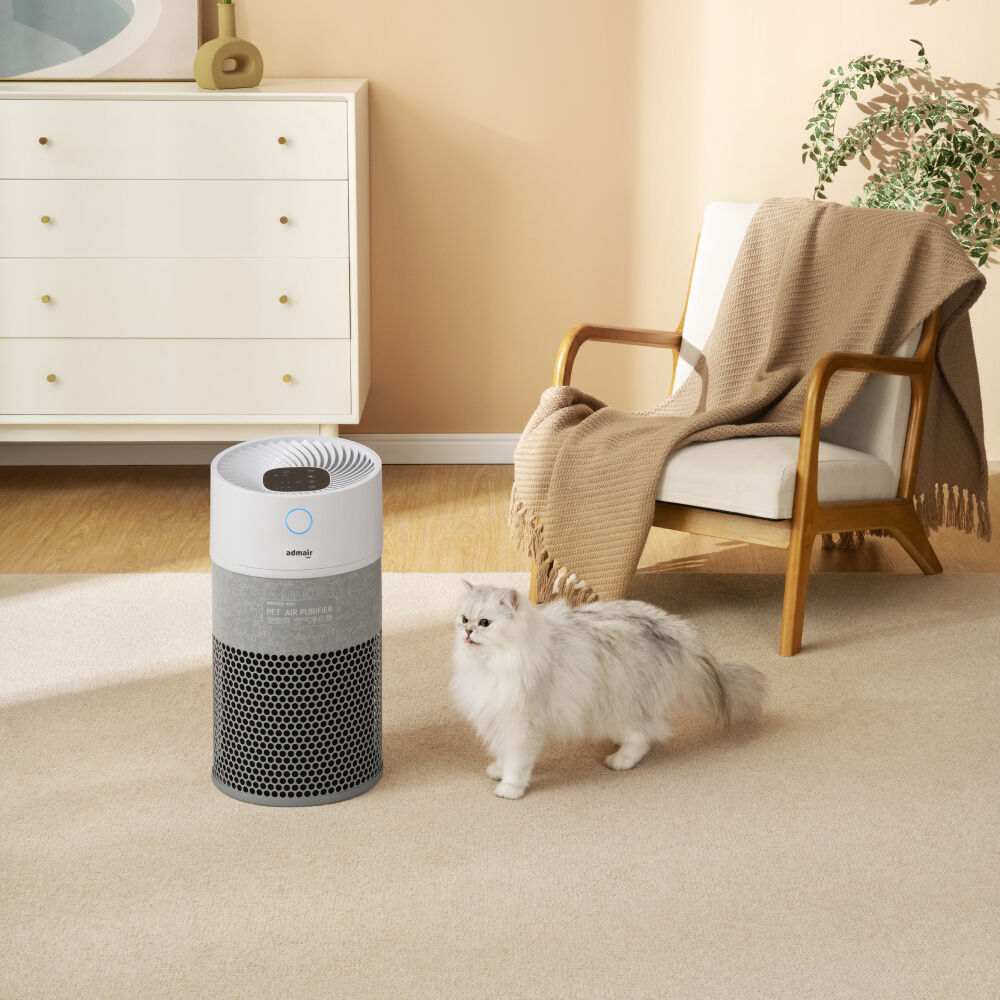Why Is a Pet Air Purifier Essential for Homes with Animals?
Creating a Healthier Indoor Environment for Pet Owners
Living with beloved pets brings immense joy and companionship, but it also introduces unique challenges to maintaining clean indoor air. A pet air purifier has become an indispensable tool for pet owners who want to create a healthier living space while enjoying the company of their furry friends. From managing pet dander and odors to reducing airborne allergens, these specialized air cleaning systems offer comprehensive solutions that benefit both humans and animals alike.
The presence of pets significantly impacts indoor air quality in ways many pet owners don't realize. Our four-legged companions constantly shed fur, dander, and microscopic skin cells that become airborne and settle on surfaces throughout our homes. Additionally, pets can bring in outdoor pollutants, and their activities contribute to the circulation of dust and other particles. Understanding these challenges helps explain why a pet air purifier has become essential equipment in homes with animals.
Understanding Pet-Related Air Quality Concerns
Common Air Pollutants from Pets
Pet dander, consisting of tiny skin flakes, is one of the most persistent air quality challenges in homes with animals. These microscopic particles can remain suspended in the air for hours and trigger allergic reactions in sensitive individuals. Beyond dander, pets contribute to indoor air pollution through shed fur, saliva particles, and tracking in outdoor contaminants on their paws.
Pet odors present another significant concern, especially in smaller living spaces. These odors can emanate from litter boxes, wet fur, or general pet activities, creating an unpleasant environment that's difficult to address with standard air fresheners. A pet air purifier specifically tackles these odor molecules at their source, rather than merely masking them.
Health Implications for Family Members
The accumulation of pet-related air pollutants can have serious health implications for household members. People with allergies or asthma may experience increased symptoms, including sneezing, coughing, and respiratory discomfort. Even family members without known allergies might develop sensitivity over time due to continuous exposure to pet-related allergens.
Children and elderly individuals are particularly vulnerable to poor indoor air quality. Their developing or compromised immune systems may react more strongly to airborne pet allergens, making it crucial to maintain clean air in homes with animals. A properly functioning pet air purifier helps create a safer environment for these sensitive family members.
Key Features of Effective Pet Air Purifiers
Advanced Filtration Technology
Modern pet air purifiers incorporate multiple stages of filtration to effectively capture different types of pet-related contaminants. The cornerstone of these systems is the HEPA filter, which can trap particles as small as 0.3 microns, including pet dander and microscopic allergens. This powerful filtration capability ensures that even the smallest pet-related particles are removed from the air.
Carbon filtration plays a crucial role in addressing pet odors. Activated carbon filters contain millions of microscopic pores that absorb and neutralize odor molecules, effectively eliminating rather than masking unpleasant pet smells. The best pet air purifier models combine these technologies with pre-filters to capture larger particles like pet hair, extending the life of the main filters.
Smart Features and Operation
Today's advanced pet air purifiers come equipped with intelligent features that enhance their effectiveness and user convenience. Automatic sensors detect air quality changes and adjust operation accordingly, ensuring optimal performance when pets are most active. Some models include programmable timers and sleep modes, allowing for efficient operation while maintaining energy efficiency.
Mobile connectivity enables remote monitoring and control through smartphone apps, letting pet owners manage their air purifier settings even when away from home. These smart features help maintain consistent air quality while adapting to the dynamic nature of pet-related air pollution.

Maximizing the Benefits of Your Pet Air Purifier
Optimal Placement and Coverage
Strategic placement of your pet air purifier significantly impacts its effectiveness. Positioning the unit in areas where pets spend most of their time ensures maximum capture of dander and other pollutants at their source. Consider placing units in bedrooms, living rooms, or near pet beds and litter boxes for optimal results.
Understanding room coverage is crucial for effective air purification. A pet air purifier should be sized appropriately for the space it's meant to clean, taking into account ceiling height and room dimensions. Multiple units may be necessary for larger homes or homes with multiple pets to ensure comprehensive coverage.
Maintenance and Filter Care
Regular maintenance ensures your pet air purifier continues to perform effectively. This includes cleaning or replacing filters according to the manufacturer's recommendations, which may need to be more frequent in homes with multiple pets or heavy shedders. Regular cleaning of pre-filters and exterior surfaces prevents the accumulation of pet hair and maintains optimal airflow.
Monitoring filter life and planning replacements helps maintain consistent air quality. Many modern pet air purifiers include filter life indicators, making it easier to track when maintenance is needed. Keeping spare filters on hand ensures continuous protection against pet-related air pollutants.
Frequently Asked Questions
How often should I replace the filters in my pet air purifier?
Filter replacement frequency depends on several factors, including the number of pets, their type, and the amount of dander they produce. Generally, pre-filters should be cleaned or replaced every 3-4 months, while HEPA and carbon filters typically need replacement every 6-12 months. However, homes with multiple pets or heavy shedders may require more frequent replacements.
Can a pet air purifier completely eliminate pet odors?
While a high-quality pet air purifier significantly reduces pet odors, it works best as part of a comprehensive approach to pet odor management. Combined with regular cleaning, proper ventilation, and good pet hygiene, an air purifier with activated carbon filtration can effectively neutralize most pet-related odors in your home.
What size pet air purifier do I need for my home?
To determine the right size, calculate the square footage of the room where you'll place the purifier and choose a model rated for that space or larger. For optimal performance, select a unit rated for a slightly larger area than your room size, especially if you have multiple pets. Remember that air purifiers work most effectively in enclosed spaces where air can be fully circulated through the filtration system.

 EN
EN
 AR
AR
 NL
NL
 FR
FR
 DE
DE
 EL
EL
 HI
HI
 IT
IT
 JA
JA
 KO
KO
 PL
PL
 PT
PT
 ES
ES
 ID
ID
 VI
VI
 TH
TH
 TR
TR
 MS
MS
